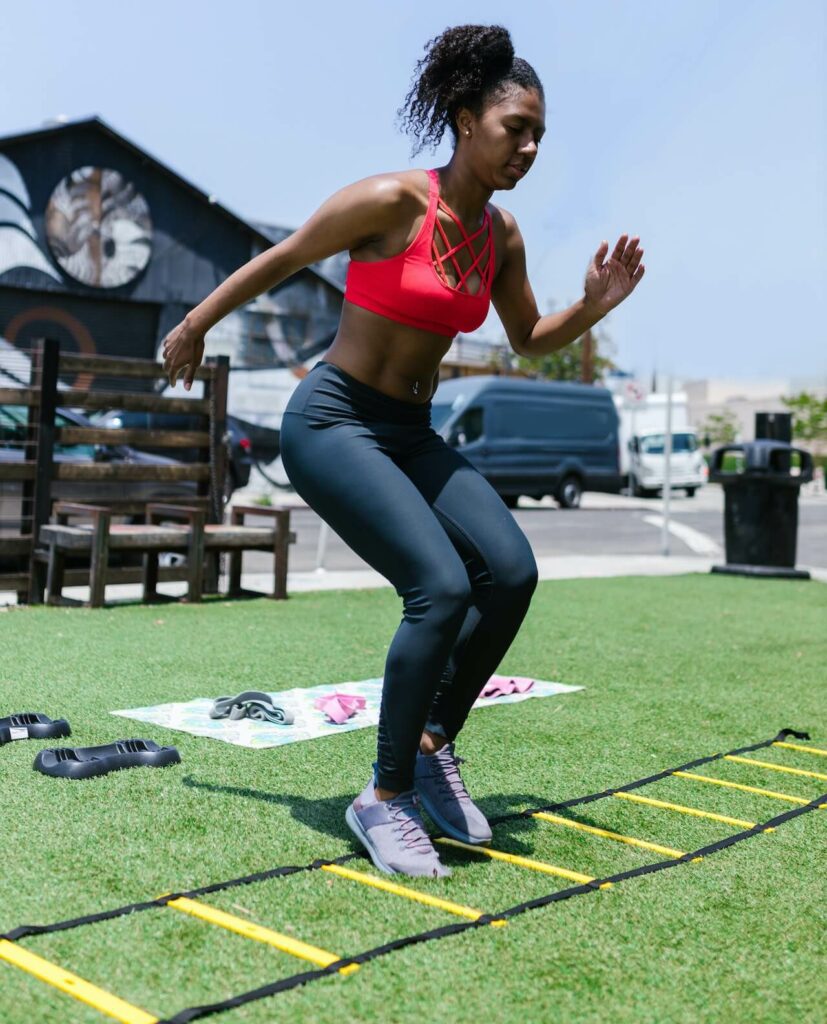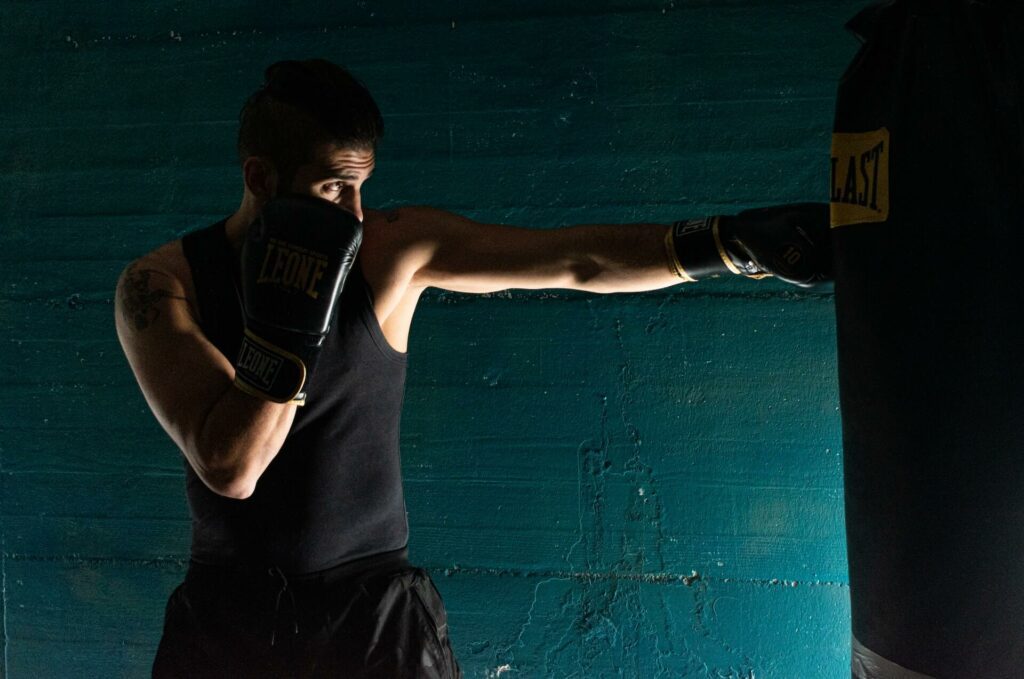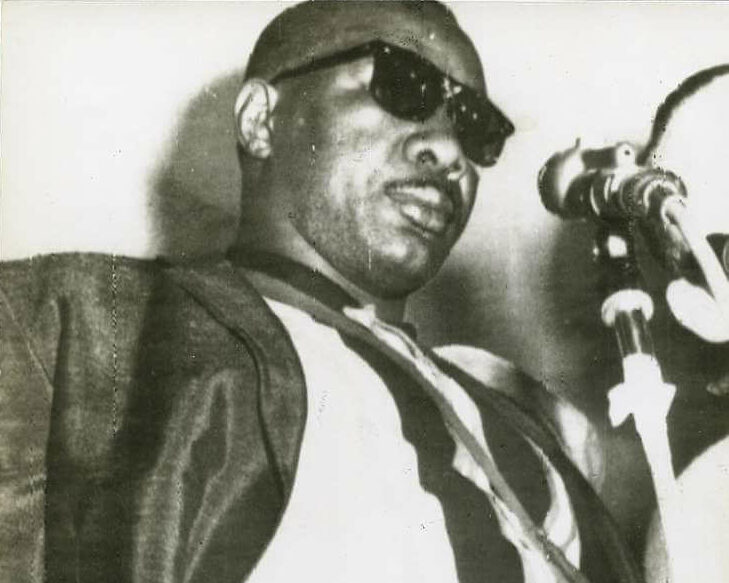Intro
A crucial part of a boxer’s boxing skill is movement and footwork. Every critical fundamental starts from the legs, a punch starts from the legs’ motion, the defense begins with good footwork, and even the distance is kept with appropriate footwork. A boxer can only achieve great results with great footwork, and there cannot be a complete all-around boxer without great footwork.
Here we will review five boxing footwork drills, some of which can be done at home or without equipment, and some require equipment.
Dancing for boxing footwork
Yes, it is surprising, but dancing can help significantly improve a boxer’s footwork. Evidence shows that dancing improves boxing footwork with coordination, quickness and balance, body movement, and evasion skills.
For example, the Cuban boxing national team has been seen in a couple of videos dancing to train their footwork and elusiveness skills. But also, many Cuban footwork drills are like a non-formal dance. The Cuban boxing style relies mostly on footwork and defense. National boxing teams whose style relies on good footwork usually have dancing drills to improve their footwork.
We can also see as an example one of the best boxers exists, Vasily Lomachenko (Two-time Olympic gold medalist and a world champion). He said multiple times that his father (his main coach) took him out of boxing to dancing classes for two years as a kid. Then, when his dad thought he was ready, he put him back into boxing. Vasily Lomachenko has one of the best footwork in boxing. It affects his dodging, defensive, and creating angles capabilities, which are phenomenal and led the crowd to say that he lives in the “matrix” for his unrealistic dodging quickness. He always says that he wasn’t be who he is today without his father’s regime and training.
Using agility ladder for boxing footwork

A core equipment to improve boxing footwork, the agility ladder enhances every aspect of footwork, coordination, speed, precision, and movement. It’s essential to perform the agility ladder drills correctly for maximum efficiency in your footwork workouts.
Here is a short list of exercises for boxer’s footwork that requires an agility ladder:
- Step and jab – The step and jab require you to stand parallel to the agility ladder and step with your lead foot to a rectangle and, at the same time, throw a jab, then quickly do the same on the next rectangle in the agility ladder until you reach the end of the ladder.
- Step and cross – This should be performed the same as step and jab but instead of throwing a jab, throw a cross.
- Zig-Zags – Running diagonally across the squares and placing each leg separately on the square. After reaching the next square, change direction and run diagonally in the opposite direction. Repeat and continue until you reach the end of the ladder. This exercise should be carefully seen in a video for better understanding.
- Single-leg hops – Hop with one leg across each square. This will improve your leg strength and precision.
- There are many different exercises for the agility ladder – in-out hops, forward-backward hops, lateral shuffles, two-foot hops, high knees, scissors, side-to-side hops, agility taps, box drill, and more.
Remember to focus on accuracy more than speed at the start. After you get comfortable doing these exercises try increasing the pace gradually.
Here is a video of high-quality agility ladder workout by the national Russian boxing team:
Using cones for boxing footwork
Cones are a great peace of equipment to improve boxing footwork. They perform as stations that need to be passed by and considered in a footwork drill. In addition, it creates a pattern and order in the drill, making it easier to create unique and repetitional drills.
Here is a short list of exercises for boxer’s footwork that are done using cones:
- In-out cone drill – Placing multiple cones in one straight line with at least one step gap between each of them. Stand in parallel to the cone line, jump with your body and the front leg between the cones gap and throw a jab, then return backwards with your front leg and body. Continue to the next gap between the next cones in the line until you get to the end.
- Sprinting cone drill – Placing multiple cones in one straight line, with each gap bigger than the one before. Starting from the starting cone, sprinting to the next cone, touching it, and returning to the starting cone, then from the starting cone continuing to the next cone of the cone touched, repeatedly until reaching the starting cone from the last cone in the line.
- Infinity movement cone drill – Placing two cones with two steps gap between them, then using the boxing movement (maintain the gap between your legs by stepping with each leg each time), do an infinity shape between the two cones.
Cones bring very versatile options for footwork exercises, thus there are many ways to order them for different footwork drills, here you can take some inspiration for more drills that could be done with cones:
Using a duct tape for boxing footwork
By sticking duct tape to the floor, we can create versatile shapes for different footwork drills. This is attainable and can almost be done anywhere.
Here is a short list of duct tape shapes and the according footwork exercise:
- Small Cross shaped – Can be used for one-leg jumps to each divided section in the cross, which will help build strong leg muscles and endurance.
- Agility ladder shaped – It is also possible to make an agility ladder shape on the floor with duct tape so you can do any agility ladder exercise.
- 3 columns and 15 rows of squares – This is a special shape that is unique to the Uzbekistan national team footwork workout regime, they preform a mixture of dance between each square with boxing stance and punches. example:
There are many shapes you can form with a duct tape to make a unique footwork drill. Each will train your footwork precision, coordination, and movement. You can take more ideas and examples from here:
Summary
There are many ways to train your boxing footwork. Each has its own purpose, and it’s essential to do a different drill every some period of time in order to develop your brain for new movements and constantly improve your footwork. This will make your footwork better each time and will drive results in the ring accordingly.




